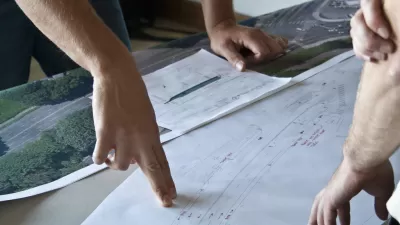Most members of the public are still very skeptical that removing a vehicle lane won’t cause terrible congestion—especially on already busy streets. A recent articles details some of the counter arguments to those concerns.

In anticipation of Calgrary’s proposal to build a network of cycle tracks in its downtown, Tom Babin explores claims that removing travel lanes won’t wreak traffic havoc on the city.
The most controversial of the proposed plans: to turn a lane of traffic on 1 Street S.E./Macleod Trail downtown into a cycle track—one of four lanes on the road would be given to bikers.
“Doubts about the idea turned to outright skepticism when a traffic study was presented as part of the proposal that said the cycle track would lead to an increase in travel time on 1st Street by a mere 30 to 60 seconds during the evening commute,” writes Babin.
Skeptical, Babin consulted with Rock Miller, the Irvine, CA-based transportation planner and traffic engineer who prepared the report. Miller explains concepts like extra capacity and turning lights. Miller even suggests that travel times might even improve on the street.
Still skeptical, Babin questions Sandeep Agrawal, a professor and director of the Planning Program at the University of Alberta in Edmonton, who lays out a very strong argument: “Whenever you remove a travel lane and put in a bike lane, the bike lane gets a bad rap…The question is, if those people (on bikes) were in cars, how much would it have delayed traffic? They probably would have delayed it more.”
FULL STORY: Remove a lane to improve traffic? Expert explains his Calgary’s cycle track proposal

Alabama: Trump Terminates Settlements for Black Communities Harmed By Raw Sewage
Trump deemed the landmark civil rights agreement “illegal DEI and environmental justice policy.”

Planetizen Federal Action Tracker
A weekly monitor of how Trump’s orders and actions are impacting planners and planning in America.

The 120 Year Old Tiny Home Villages That Sheltered San Francisco’s Earthquake Refugees
More than a century ago, San Francisco mobilized to house thousands of residents displaced by the 1906 earthquake. Could their strategy offer a model for the present?

In Both Crashes and Crime, Public Transportation is Far Safer than Driving
Contrary to popular assumptions, public transportation has far lower crash and crime rates than automobile travel. For safer communities, improve and encourage transit travel.

Report: Zoning Reforms Should Complement Nashville’s Ambitious Transit Plan
Without reform, restrictive zoning codes will limit the impact of the city’s planned transit expansion and could exclude some of the residents who depend on transit the most.

Judge Orders Release of Frozen IRA, IIJA Funding
The decision is a victory for environmental groups who charged that freezing funds for critical infrastructure and disaster response programs caused “real and irreparable harm” to communities.
Urban Design for Planners 1: Software Tools
This six-course series explores essential urban design concepts using open source software and equips planners with the tools they need to participate fully in the urban design process.
Planning for Universal Design
Learn the tools for implementing Universal Design in planning regulations.
Clanton & Associates, Inc.
Jessamine County Fiscal Court
Institute for Housing and Urban Development Studies (IHS)
City of Grandview
Harvard GSD Executive Education
Toledo-Lucas County Plan Commissions
Salt Lake City
NYU Wagner Graduate School of Public Service




























